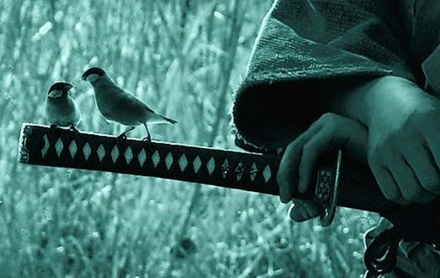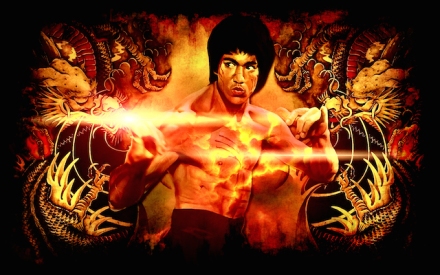
“Supreme excellence consists in breaking the enemy’s resistance without fighting.” –Sun Tzu
“It is useless to fight against people’s rigid ways, or to argue against their irrational concepts. You will only waste time and make yourself rigid in the process. The best strategy is to simply accept rigidity in others, outwardly displaying deference to their need for order. On your own, however, you must work to maintain your open spirit, letting go of bad habits and deliberately cultivating new ideas.” – Robert Greene
Imagine you are back in high school and a bully starts making fun of you in front of everyone. What do you do? Poke fun back? Cry? Run? Punch him in the face? What? The answer is none of the above.
The best way to deal with a bully who is making fun of you is to make fun of yourself better than the bully did. The worst way to deal with a bully is to retaliate. This is because retaliation perpetuates the bully’s agenda and leads to violence, whereas making fun of yourself uses self-deprecating humor to derail the bully’s agenda while forcing the bully into a confused psychosocial dilemma. It’s a power-play, and it’s all psychological. The bully expects you to poke fun back at him, or cry, or run, or throw a punch; anything but you making fun of yourself. And if you can do it better than the bully did, then bully for you. Pun intended.
Like Carlos Castaneda said:
“Feeling important makes one heavy, clumsy and vain. To be a warrior one needs to be light and fluid… Self-importance is man’s greatest enemy. What weakens him is feeling offended by the deeds and misdeeds of his fellow men. Self-importance requires that one spend most of one’s life offended by something or someone… The average man is hooked to his fellow men, while the warrior is hooked only to infinity.”
Let’s shed the heaviness of self-importance and don the lightness of humor instead. Let’s feel “offended” but then let it go, like a sponge absorbs water and then squeezes it out. The key is not to linger with the pettiness of the offense but to transcend the offense through a humor of the most high. Be present with the offense, with the pain, with the shame, but then release it through laughter. Like Mark Twain wittily opined, “Humor is mankind’s greatest blessing. Against the assault of laughter nothing can stand.”
Boxers, MMA fighters, soldiers, martial artists, and any individual who gets their minds and bodies into peak condition: all of them are smart and healthy up until the point that they idiotically and unhealthily ruin everything they strived for by either egotistically, patriotically and/or greedily placing themselves into harm’s way, thus destroying everything they worked so hard to attain.
Almost every martial art philosophy can agree that the point of learning to fight is so that you don’t have to. But, sadly, almost every martial artist eventually gets seduced by ego, money, or both. Think about it. They are showcasing violence for money and ego glorification, inadvertently going against the very principles they stand (or once stood) for. Sad. You can’t even turn on the TV without seeing some idiot idiotically hitting another idiot with his/her idiot fists. Pathetic. But, hey, even Bruce Lee was victim of the ego glorification, money, and Hollywoodization of Kung Fu. Something I’m sure he would have learned to regret had he lived long enough. He was only 32 when he died.
One of the most important reasons for standing on the shoulders of giants is so that we can see further than they did. The “giant” in this case is Bruce Lee. The art of fighting without fighting was originally portrayed in his movie Enter the Dragon. The idea is simply based on outsmarting one’s “opponent” so that the fight never has to occur. It embraces the core principle of learning to fight so that you don’t have to, and it is inherently non-violent. Taken to the next level (that is seeing further than Bruce Lee did) and applying it broadly and philosophically, the idea is extremely powerful, and it’s a very effective tool for an amoral agent practicing the principles of non-violence.
“You haven’t yet opened your heart fully, to life, to each moment. The peaceful warrior’s way is not about invulnerability, but absolute vulnerability–to the world, to life, and to the Presence you felt. All along I’ve shown you by example that a warrior’s life is not about imagined perfection or victory; it is about love. Love is a warrior’s sword; wherever it cuts, it gives life, not death.” – Dan Millman
In the movie, Bruce Lee’s character “tricks” the other character in order to avoid fighting him. It’s not that he’s afraid to fight him, it’s that there really is no point in fighting him just to prove he can beat him. He knows he can beat him. But he would rather teach him a lesson. Hence the art of fighting without fighting requires tricking the situation somehow. It’s having the wherewithal to rise above the situation, using metamind. It’s not only having the capacity to outthink one’s opponent, it’s also the ability to out-reason one’s own emotions (i.e. rising above feelings of anger, jealousy, or revenge). It’s a kind of emotional alchemy one must master in the moment in order to get a grip on the situation before it escalates into violence.

Here’s the thing: Acting violently in a violent culture only perpetuates violence. Similarly, acting immorally in an immoral society just perpetuates immorality. Unhealthy acts beget unhealthy acts. Like Gandhi said, “An eye for an eye makes the whole world blind.” Lest the whole world go blind, eventually someone wise enough must wake up, swallow their pride, think wisely instead of emotionally, and put a stop to the vicious cycle. One who implements the art of fighting without fighting is precisely the one who ends the violent and immoral cycle. The tactics and methods one uses in practicing this art can be myriad and far-reaching, and always depend on the situation.
The key is to find a middle ground. In a violent culture, the worst thing you can do is to react violently (violence should only ever be used as an act of self-defense, and even then used only as a last resort). The second worst thing you can do is to remain complacent and allow atrocities to occur. The best course of action is to be proactively non-violent through strategic and wise civil disobedience.
Similarly, in an immoral society, the worst thing is to be immoral and commit atrocities. The second worst thing is to remain too moral (goody-two-shoes, blind-faith, status quo junkies) and simply allow atrocities to occur. The best course of action is to react amorally through tactical civil disobedience against the immoral system, or by counting coup in humorous non-violent ways.